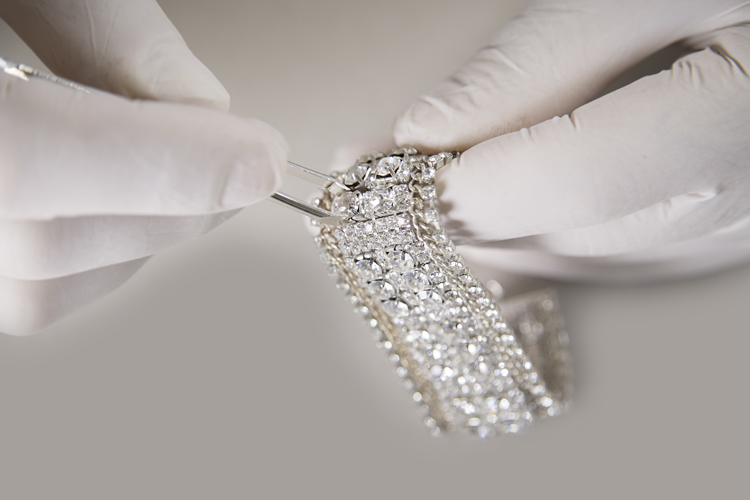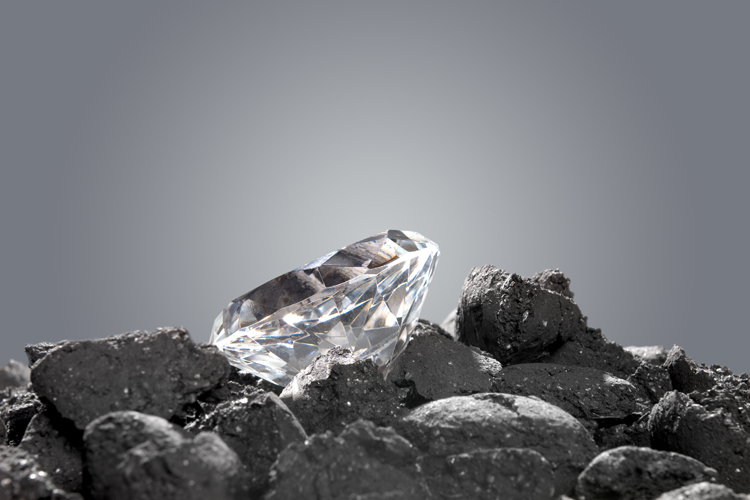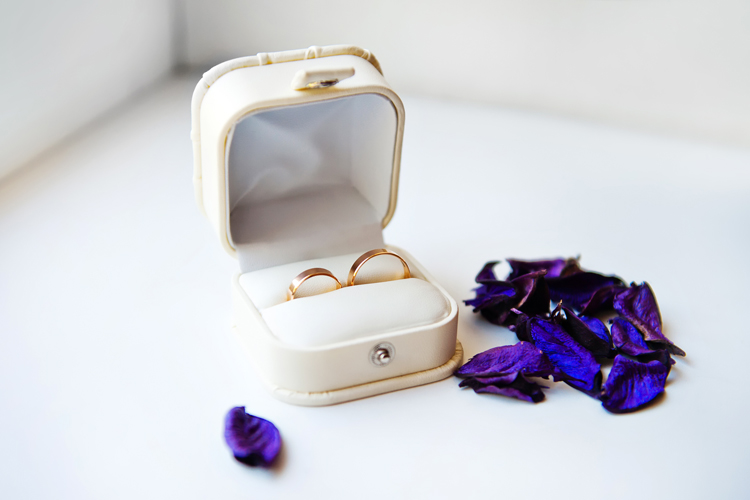Gemstones have been treasured for centuries, valued for their beauty and symbolism. Discover the definitive glossary of jewelry.
From sparkling diamonds to richly hued emeralds and sapphires, these precious stones hold a special place in human culture.
However, understanding the terminology surrounding jewelry and gemstones can be a daunting task.
With so many technical terms and industry jargon, it’s easy to get lost in the world of jewelry and gemstones.
This is where a glossary of jewelry and gemstone terms comes in handy.
In this article, we will explore the key terms used in the world of jewelry and gemstones, from the 4Cs of diamond quality to the different types of gemstone cuts and settings.
Whether you’re a jewelry enthusiast or a beginner, this glossary will serve as a valuable reference guide to help you navigate the world of jewelry and gemstones with confidence.
Adularescence
The bluish-white optical effect is caused by the interference of light within a gem’s layered structure.
Aggregate
Gem material that occurs as a dense, fibrous fine-crystalline mass.
Asterism
A four- or six-ray star effect that appears on cabochons and is caused by the reflection of light on fibrous or rutile inclusions.
Aventurescence
The colorful, glittering reflections of small plate-like or leaflike inclusions of minerals such as hematite or fuchsite.
Bezel
A type of stone setting that uses a wall of metal to surround and secure a gemstone. Also, the horizontal wire that runs between the prongs of a claw setting.
Birefringence
The difference between the highest and lowest refractive indices in gemstones with double refraction.
Botryoidal
A mineral shape or formation that looks similar to a bunch of grapes.
Brilliant cut
An ideal cut of mathematically calculated proportions that was designed to maximize a diamond’s fire and brilliance.
Briolette
A rounded drop-shaped gemstone that is fully faceted and often drilled for suspension.
Cabochon
A type of gemstone cut that has a flat base and a smooth domed upper surface.
Carat
The measurement of weight used by the international gem trade – 1 carat equals 0.2 grams.
Channel setting
A type of setting in which rows of square or baguette-cut stones are butted up in a channel and secured on two edges.
Chatoyancy
A cat’s-eye effect that occurs in stones cut as a cabochon when light reflects off parallel fibers, channels, or rutile needles.
Claw setting
A raised, open setting with wire prongs that grip the outer edge of a faceted gemstone.
Cleavage plane
The flat plane along which a crystal can be split. Some crystals cleave easily (perfect cleavage) and others cannot be cleaved (no cleavage).
Collet
A rub-over bezel setting for a faceted stone.
Color banding
Parallel stripes of different colors or shades that occur in gemstones such as agate or malachite as a result of rhythmic or layered crystallization.
Color zoning
The variations in color and distribution that occur in gemstones as a result of growth layers and the presence of coloring agents.
Crown
The upper portion of a faceted stone above the girdle.
Crystal
A crystal is a gem’s uniform body that has an ordered internal atomic structure called a lattice.
Culet
The lowest part of a faceted stone, which can appear as a point or a ridge.
Crystal habit
The arrangement of faces preferred by a mineral. The term also refers to the crystal’s type or form, for instance, tabular or octahedral.
Diffusion treatment
The process of heating gem material for a prolonged period having introduced chemicals into the surface of the stone. It produces a permanent color change in the outer layers of the gem leaving the center unchanged.
Dispersion
The splitting of white light into its spectral colors (known as fire) as it travels through an angled surface on a gemstone.
Double refraction
The splitting of light rays into two when entering a noncubic mineral. It causes a doubling of the back facets in a gemstone.
Doublet
A composite stone of two pieces in which an upper section of clear quartz or synthetic material is cemented to a thin lower section of a gem.
Drusy
The crystalline surface of the central/inner cavity of an agate nodule that commonly consists of quartz crystals.
Facets
Polished flat faces on a gemstone that are cut at varying angles so that light travels through the stone, making it brilliant.
Fancy cut
Describes gemstone cuts and shapes other than round and oval brilliant cuts.
Fluorescence
The luminescence (or emission of visible light) by certain gemstones under ultraviolet light. Occurs when a gemstone’s electrons, excited by the UV light, release energy as visible light when back to their non-excited state.
Flux-melt process
A process in which powdered ingredients are melted and fused in a solvent (flux) at high temperatures over a period of months. Used in the manufacture of high-quality synthetic gemstones such as rubies and sapphires.
Fracture
The irregular surface produced when a gemstone is broken upon impact.
Fusing
The joining of metals by using heat rather than solder; the metals melt at surface level and fuse together.
Girdle
The outer edge or widest part of a gemstone, where the crown meets the pavilion.
Grain or bead setting
A type of setting in which a faceted stone is held in place by tiny beads of metal that have been raised by a graver and shaped with a beading tool.
Granulation
The creation and application of tiny balls of silver or gold to decorate the surface of metal.
Gypsy setting
A type of setting in which a faceted stone is recessed into metal so that the girdle is flush with the metal’s surface.
Hardness
The hardness value of a gemstone is based on its resistance to abrasion.
Heat treatment
A common gemstone treatment that changes or intensifies the color of a gemstone and sometimes improves its clarity.
Idiochromatic
The term used to describe gems whose color is due to their chemical composition rather than due to the presence of external coloring agents.
Illusion setting
A style of setting that is designed to make a diamond look larger than it is by surrounding it with a white gold or platinum disk.
Inclusions
The foreign matter or crystal irregularities that occur within a gemstone that can help identify species, origin, and authenticity.
Iridescence
Rainbow-like color play that is produced when light reflects off internal structures within a gem, splitting into spectral colors.
Irradiation
A gemstone treatment that changes or intensifies the color of a stone. It is not always permanent.
Karat
The measurement of fineness of gold or gold alloy. Pure gold is described as 24 karats, while 18 karat means that the metal contains 18 parts pure gold and six parts alloy (by weight).
Lost-wax casting
A process in which a one-part mold is formed around a three-dimensional wax model that is removed by controlled, incremental heating. The subsequent void is then filled with molten metal.
Loupe
A magnifying lens for viewing gemstones. The standard magnification is 10x.
Luster
The shine of a gem caused by external surface reflection. The highest luster is adamantine, and the lowest is dull.
Make
Describes the overall cut of a gemstone, including proportions, shape, symmetry, and finish.
Matrix
The host or parent rock that naturally surrounds gem material.
Mohs scale
The Mohs scale of 1 to 10 indicates a gem’s scratch hardness (10 Mohs is the hardest).
Mokume-gane
A process in which layers of different colored metals are fused together as a laminate so that areas can be filed back to expose a rippled surface pattern.
Mount
The section of a ring that contains gemstones, for example, a group of settings consisting of a central stone and two side stones.
Opalescence
A bluish-white milky effect caused by selective scattering of shortwave light from small particles in a stone.
Overtone
The colored highlights that overlie the body color of a pearl.
Oxidization
The blackening of metals with chemicals or the chemical reaction that occurs when a metal is exposed to the air.
Patination
A process for coloring metals by exposure to different chemicals.
Pavé setting
A type of setting in which small round faceted stones are bead-set close together in a massed arrangement.
Pavilion
The lower section of a faceted stone, from the girdle to the culet.
Pegged setting
A type of setting in which small round cabochons are grouped tightly together and secured by small metal pegs.
Plan view
The top view of a gemstone.
Pleochroism
The collective description of a gemstone that appears to have two or more different colors, or shades of color, when viewed from different directions.
Point size
The diameter size of small faceted gemstones in relation to their calibrated weight, which is measured in points of a carat (1 ct equals 100 points).
Prongs
The vertical or upright posts of a claw setting; the tips of the prongs are shaped into claws to hold the gemstone in place.
Refraction
The bending of light as it passes from air into a different medium, such as a gemstone.
Reticulation
The process of heating metal to a point at which the surface appears to ripple, creating a decorative molten effect.
Ring shank
The part of a ring that encircles the finger.
Rolling-mill texturing
The embossing of a decorative surface onto silver or gold by means of passing the annealed metal through a rolling mill with textured material.
Rose cut
A diamond cut dating from the 1600s that has a flat base and a faceted dome. It was often foil backed.
Rub-over setting
Describes a bezel setting in which the top of the wall is either pushed against the side of a stone or is burnished over the edge of a girdle.
Schiller
A sheen similar to iridescence produced by the interference of light reflecting off internal layers within a gemstone.
Silk
A misty appearance in transparent gemstones that s caused by the reflection of light on fine needlelike inclusions or canals.
Table
The flat surface on top of a faceted stone; the largest facet, or face.
Table cut
An early form of diamond cut that simply cleaved an octahedral crystal to create a flat table and culet.
Tenebrescence
The reversible color-change phenomenon in which a gemstone’s color fades when exposed to one wavelength of light but is restored by a different wavelength of light or by being placed in darkness. Heating destroys the effect.
Triplet
A composite stone of three pieces in which one part is a genuine gemstone, and the other parts are either glass, foil, synthetic, or low-grade material.
Step cut
A system of cutting straight-sided stones with a series of rectangular parallel facets that follow the shape of the girdle in a stepped arrangement.
Tension setting
A type of setting that uses tension in the metal to support and hold a stone set between two ends of a shank.
Bibliography and References:
W. Schumann. “Gemstones of the World,” Union Square & Co., 2013




